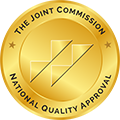Why is Heroin so Addictive?
People who use heroin report feeling a surge of pleasure and euphoria. Heroin is classed alongside many addictive drugs euphoriant because the enhancing characteristics they have on the brains reward system. The “heroin rush” the user experiences is so elusive that for many who have used other drugs testify that it is impossible to replicate. The result of heroin’s unique euphoria is the user will continue to stay active in addiction despite experiencing negative consequences. The fear of withdrawal symptoms creates a substantial barrier for any attempt at addiction recovery. As a result of heroin’s addictive nature, after prolonged use, a heroin user is required to increase their intake amount just to experience the same effect or feel normal. Their rise tolerance also affects levels of physical withdrawal symptoms experienced by those with a substantial degree of heroin addiction.
Get Help With Treatment Programs For Heroin Addiction
We already discussed how addictive heroin can be, but there’s hope! A heroin addiction treatment center can provide the necessary treatment programs and support to help you through detox and withdrawal, as well as provide guidance and assistance in developing a long-term recovery plan.
Regain control of your life and overcome addiction at Serenity Spring Rehab Center. At Serenity Spring Rehab Center in Edgewater, FL, we offer treatment programs to fight mental health disorders and substance use addiction through our multifaceted approach. Our addiction treatment center is peaceful, secluded and fully equipped to provide you with everything you need, physically, mentally and spiritually.
If you or someone you know is struggling with heroin addiction, please don’t hesitate to reach out for help.
“Quick Facts” About Heroin Addiction Today
- 64,000 Drug Overdose Deaths in 2016
- 15,564 Deaths Were Directly from Heroin Overdose
- 19,547 Deaths were Directly Related to Fentanyl Overdose
- Men Are More Likely to Die From Heroin Overdose
- 91 Men and Women In The US Die Every Day from an Opioid Overdose
Statistics from cdc.gov
Heroin Withdrawal
Heroin withdrawal normally begins 8 to 12 hours after the last use. The worst of the symptoms, which can include mental health disorders such as hallucinations normally persist between 24 and 72 hours. Symptoms of heroin withdrawal normally begin to dissipate after 72 hours but can last for approximately 7 days.
Withdrawal makes Heroin addiction a difficult cycle to break, but beating your substance use addiction is more than possible by finding an addiction treatment center that offers inpatient and outpatient treatment for Heroin detox. The addiction treatment center can prescribe drugs to ease withdrawal symptoms. These medications help with the recovery process by minimizing withdrawals and cravings.
Causes of Heroin Withdrawal
The physical need for heroin gets so desperate that little will stand in the way of the substance abusers’ next fix. Heroin’s chemical composition will imitate the brains natural chemical messengers that are responsible for activating neurons interfering with the way information is sent, received, and processed. Heroin’s copycat qualities and interference with the natural structure of brain messengers creates a chemical fabrication urging the heroin addict they need more. In conclusion, the brain tells the body I need heroin, and the body responds with the same request. A double edge sword that because of its mimicking qualities on brain function is unique mainly to heroin addiction and directly responsible for heroin withdrawal.
Symptoms of Heroin Withdrawal
Signs and symptoms of heroin withdrawal include; anxiety, depression, fever, chills, stomach cramps and diarrhea, nausea and vomiting, increased heart rate and blood pressure and other more extreme mental health issues. A person going through heroin withdrawal will feel very similar to as if they had contracted the flu.
Heroin substance use disorder continues to increase at an alarming rate in the United States. The Center for Disease Control reports that heroin-related deaths by overdose have quadrupled since 2010. Men and Women becoming addicted to heroin have increased steadily over the last fifteen years. Overprescribed pain medication has played a large part towards the massive growth of heroin use in the U.S. Approximately 3 out of 4 heroin addicts report starting with a prescription painkiller addiction. Heroin addiction and other painkiller medication addiction is a disease claiming 91 Americans a day; one overdose death every 19 minutes. If you or someone you know struggles with heroin dependence now is the time to discover the treatment for drug and alcohol addiction.
Heroin is an incredibly addictive Schedule I narcotic that’s been illegal in the US since the Anti-Heroin Act of 1924. Heroin gets processed by extracting morphine oils which is the principle component opium plants. Heroin affects the body by binding to the opioid receptors in the brain. Like all opiates including prescription painkillers, heroin is effective in reducing pain or inducing a numb feeling throughout the body. Most of the world’s heroin production according to Drug Enforcement Administration (DEA) comes from Mexico, South America, Southwest and other Southeast Asian countries (Afghanistan, Pakistan, Thailand). Recent estimates suggest that the United States consumes 80 percent of the global opioid supply. Most alarming is the United States accounts for only 5 percent of the world’s population. In 2015 alone, medical professionals prescribed 300 million prescription painkillers, equalling a 24 billion dollar yearly market. Cheaper, more powerful and fearfully more accessible is heroin. It is no surprise that 3 out of 4 who suffer from heroin addiction report starting with prescription painkillers.
How is Heroin Used?
Heroin can be ingested in the body several different ways. The least favorite method of those who are addicted to Heroin is oral. When heroin gets ingested orally, the body takes longer to metabolize it resulting in a lesser potency and euphoric “rush” that is most desired from heroin. When smoking heroin commonly referred to as “chasing the dragon” the standard method of use is aluminum foil, light bulb, or from a glass pipe. An interesting point about the term “smoking heroin” is it refers to vaporizing the drug to inhale its fumes, not its smoke. Aluminum foil the most popular method to inhale the fumes of heroin. Suppository is another way of using heroin. Very little research has been put forth with the technique of a suppository, also known as plugging. Heroin addiction for these individuals involves the anal insertion or vaginal insertion carried out commonly by using an oral syringe. After the heroin is dissolved, the user will fill the needle and then plug the anus or vagina with a heroin suppository liquid.
IV Heroin Addiction
Injecting Heroin or IV heroin use is most popular among those who participate in heroin addiction. Consequently, injecting heroin is associated with the most significant physical and mental health risk to the individual. Mental health problems can go as far as a hallucination. The most considerable health risk to anyone injecting a drug is death by overdose. In addition to overdosing when individuals suffer from heroin addiction they also run the risk diseases such as HIV/AIDS or hepatitis as a result of sharing unsterilized needles. Sharing spoons, water dispensaries, and cotton will run the risk of blood transmitted diseases. If you or someone you know is struggling with heroin, don’t hesitate and seek treatment for heroin addiction before it is too late.
Snorting Heroin
Snorting or sniffing heroin also known by medical term of Insufflation is a standard way heroin abuse enters the body. Those who are addicted to Heroin, especially opioid prescription drug abusers, will crush heroin or opioid painkiller into a fine powder and inhale it up their nose. This method of use is quick to hit the bloodstream by the fast absorption to the mucous membrane and sinus cavity. Snorting heroin or painkillers in comparison to injecting heroin the “rush” isn’t as strong nor is the duration of the high.
What are the short-term effects of using Heroin?
Some of the short-term side effects of using heroin are; nausea, itchy skin, flushing of the skin, “nodding out”, reduced mental health function, and a heavy feeling in their arms and legs. Most severe of the short-term effects of heroin use are overdose that can lead to death. A heroin overdose causes a person’s breathing to slow and even stop. This causes “hypoxia”, which is a condition where there is not enough oxygen reaching this brain. The effects of hypoxia can include coma, permanent brain damage, and death. Seek treatment for heroin addiction as soon as these short term side effects show and don’t wait for more extreme side effects to show.
What are the long-term effects of using Heroin?
Some of the physical long-term side effects of heroin use are; Insomnia, constipation, liver disease, kidney disease, sexual dysfunction, irregular menstrual cycle, and complications such as abscesses (for those injecting the drug). Long-term use of heroin can also lead to mental disorders like depression and severe anxiety. Heroin use also carries with it many mental consequences. A person that has abused heroin for an extended period of time will severely alter their brain chemistry. One primary consequence of heroin abuse is increased anxiety and depression. Many heroin users develop a mental dependence on the drug as well. When they are not able to get the drug, they feel like their world is out of control and they can only think about using again. But there’s still hope. Addiction treatment programs can give you the resources, treatment and support you need in order to battle heroin abuse. Inquire about addiction treatment programs in your area as soon as possible.
What Percentage of Heroin Addicts Recover?
To successfully recover from any addiction, all three parts of the disease; Mind, Body, and Spirit, must be treated. Many who have recovered from heroin addiction found success with Residential Men’s Inpatient Rehab or Intensive Outpatient Drug Treatment programs that were 12 step Immersion. Seek for an addiction treatment center that offers the 12-step program such as Serenity Springs.
Heroin addiction treatment center in Florida
If you or a loved one are struggling with heroin addiction, it’s important to know that help is available. Serenity Spring Recovery is a men’s addiction treatment center in Florida that can provide the treatment and support you need to recover. Talk to our addiction and mental health experts today to discuss admission into our men’s residential facility and begin your journey to recovery







